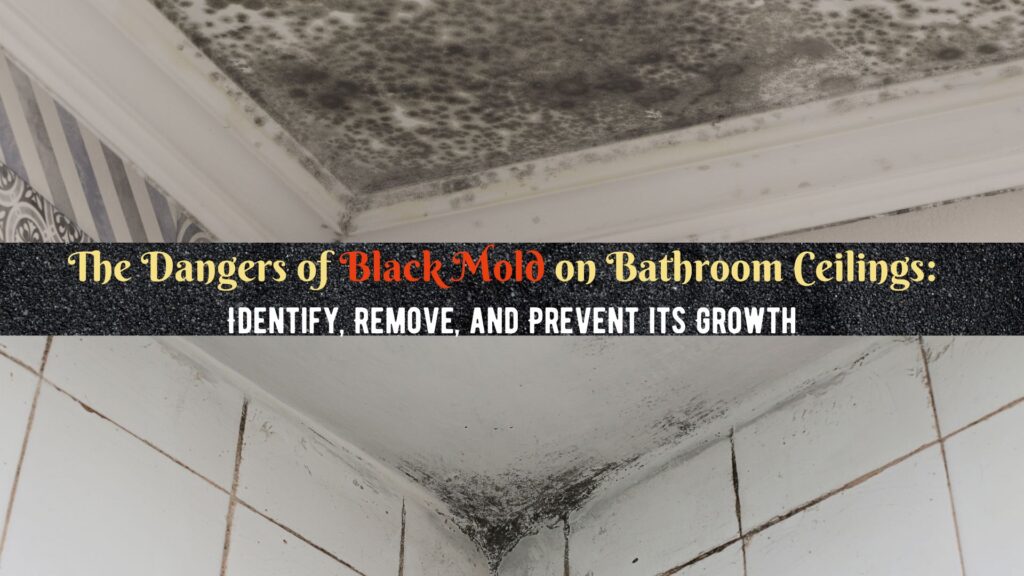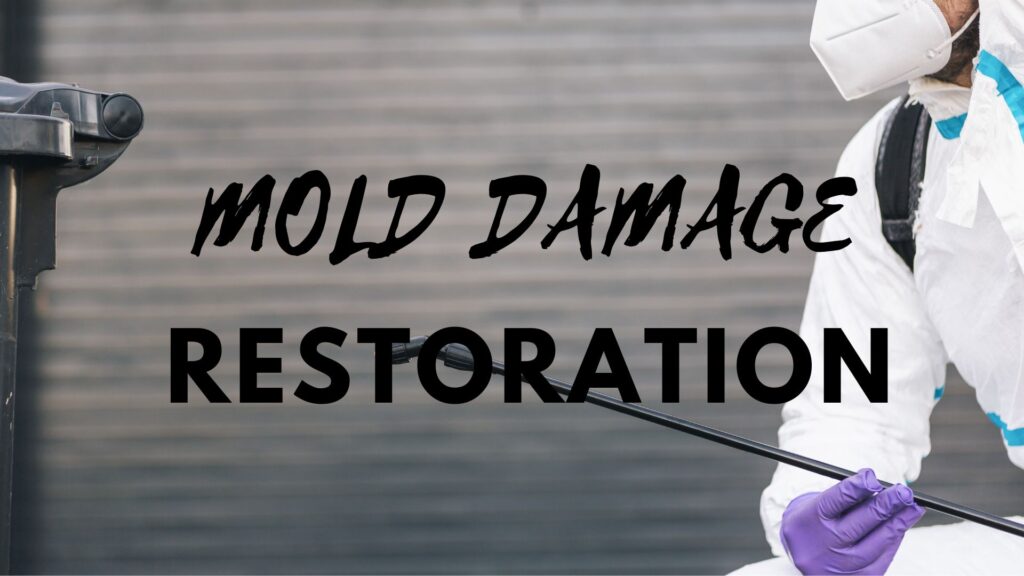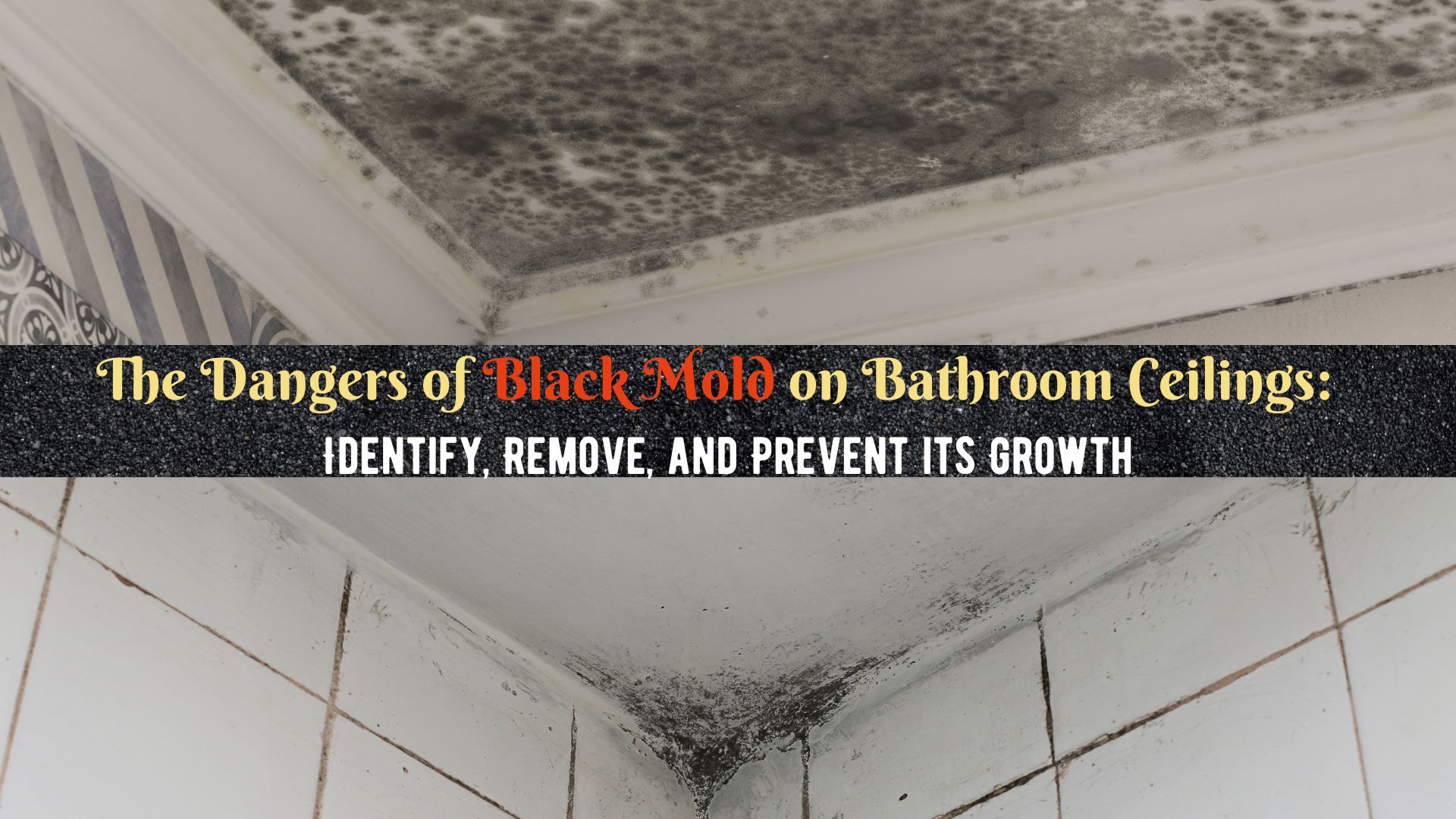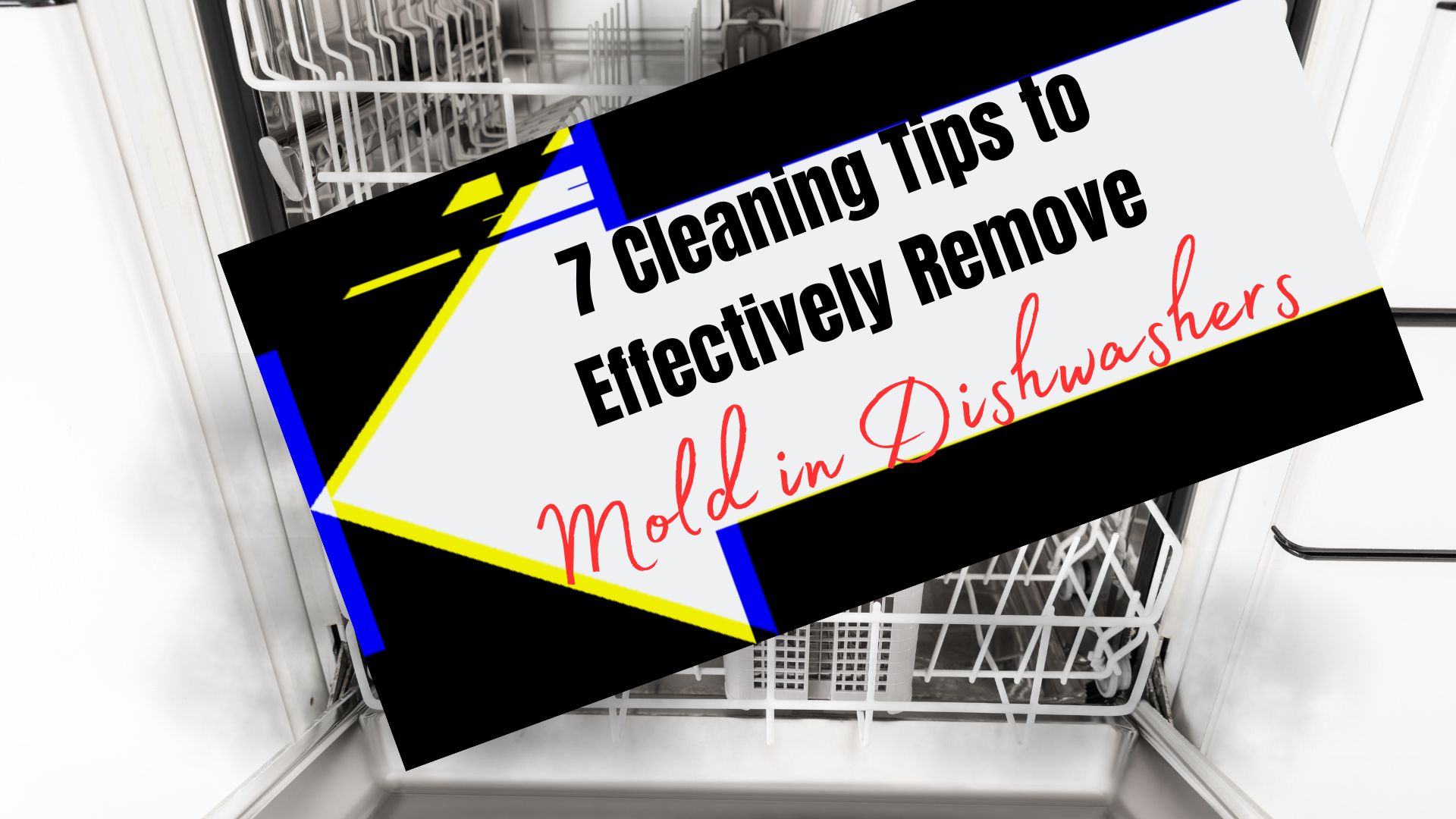In this article, we will discuss the dangers of black mold on bathroom ceilings, how to identify it, remove it safely, and prevent its growth.
Black mold is a common household issue that can occur in various areas, including the bathroom. Among the different surfaces, the bathroom ceiling is particularly prone to black mold growth due to its exposure to moisture and lack of ventilation. If you’ve noticed dark patches or discoloration on your bathroom ceiling, it’s crucial to address the issue promptly.
Black Mold on Bathroom Ceiling: Identifying Issues
Identifying black mold on your bathroom ceiling is crucial to address the issue promptly and take appropriate action. Here are some steps to help you identify black mold on bathroom ceiling:
- Visual Inspection:
Start by visually inspecting your bathroom ceiling for any signs of mold growth. Black mold typically appears as dark greenish-black patches or spots. Look for discoloration, fuzzy or slimy texture, and irregular patterns on the ceiling surface.
- Musty Odor:
Black mold often produces a musty, earthy odor. If you notice a persistent musty smell in your bathroom, it may indicate the presence of mold, even if you can’t see visible growth.
- Water Stains or Discoloration:
Check for water stains or discoloration on the ceiling surface. Mold thrives in moist environments, so any water damage or leaks can contribute to its growth. Stains or discoloration may indicate an underlying moisture issue and potential mold growth.
- Condensation and Dampness:
Assess the level of condensation and dampness in your bathroom. Mold thrives in humid environments, so excessive moisture, condensation on windows or walls, and damp surfaces increase the likelihood of mold growth, including on the ceiling.
- Allergic Reactions:
Pay attention to any allergic reactions or respiratory symptoms you or your family members experience when spending time in the bathroom. Symptoms such as sneezing, coughing, nasal congestion, or watery eyes may be indicators of mold presence.
If you suspect the presence of black mold on your bathroom ceiling based on these signs, it’s crucial to take action to confirm and address the issue promptly. You may consider consulting with a professional mold inspector or a qualified contractor experienced in mold remediation to assess the situation accurately and provide appropriate guidance.
Understanding the Growth of Black Mold on Bathroom Ceilings
Mold grows in areas that provide ideal conditions for its development. Bathrooms, with their high humidity levels, offer a favorable environment for mold spores to thrive. When warm, moist air from showers and baths comes into contact with a cool surface like the bathroom ceiling, condensation occurs. This moisture, combined with the presence of dust particles, provides a nutrient-rich environment for mold to grow.
Black mold, scientifically known as Stachybotrys chartarum, is a type of mold commonly found in damp and poorly ventilated areas. It appears as dark greenish-black patches on surfaces, and when it grows on the bathroom ceiling, it can be particularly alarming. The growth of black mold on bathroom ceilings not only poses aesthetic concerns but also presents potential health risks.
The Health Risks Associated with Black Mold on Bathroom Ceilings
Exposure to black mold can lead to a range of health issues, especially if you have a weak immune system or pre-existing respiratory conditions. The mold releases tiny spores into the air, which can be inhaled and cause adverse reactions. Some common health problems associated with black mold exposure include:
Respiratory Issues: Inhaling mold spores can irritate the respiratory system, leading to symptoms such as coughing, wheezing, sneezing, and nasal congestion. People with asthma or allergies may experience more severe reactions.
Allergic Reactions: Black mold can trigger allergic reactions in susceptible individuals, causing symptoms like skin rashes, itching, watery eyes, and throat irritation.
Toxic Effects: While not all black mold strains produce toxins, certain types can release mycotoxins, which have been linked to more severe health problems. Prolonged exposure to these toxins may lead to neurological symptoms, fatigue, headaches, and even organ damage.
It’s essential to take black mold growth on your bathroom ceiling seriously and address it promptly to minimize the risk of health issues.
Removing Black Mold on Bathroom Ceiling
Before attempting to remove black mold on bathroom ceilings, it’s crucial to protect yourself from exposure. Wear protective gear, such as a face mask, eye protection, and gloves, to prevent inhalation or direct contact with mold spores and cleaning agents. Additionally, ensure the affected area is well-ventilated by opening windows or using fans.
To clean black mold on bathroom ceiling, follow these steps:
1. Prepare the area:
Remove any items from the affected area and cover nearby surfaces to prevent spores from spreading. Place a plastic sheet or tarp on the floor, and use painter’s tape to secure it.
2. Create a cleaning solution:
Combine an equal amount of white vinegar and warm water in a spray bottle. Alternatively, you can use a solution of hydrogen peroxide and water. Avoid using bleach, as it may damage the ceiling and is less effective at killing mold on porous surfaces.
3. Spray the area, especially the affected ones:
Generously spray the moldy area on your bathroom ceiling with vinegar or hydrogen peroxide solution. Make sure the surface is thoroughly saturated.
4. Allow the solution to sit:
Let the cleaning solution sit on the moldy surface for about 15 minutes. This helps loosen the mold and makes it easier to remove.
5. Scrub and remove the mold:
Use a scrub brush or sponge to gently scrub the moldy area, applying light pressure. Wipe away the loosened mold and debris with a damp cloth or sponge. Dispose of the cloth or sponge afterward to prevent mold spores from spreading.
6. Repeat if necessary:
For stubborn mold growth, you may need to repeat the process multiple times to completely remove it. Be patient and thorough to ensure effective mold removal.
7. Dry the area:
After cleaning, use a fan or dehumidifier to dry the bathroom ceiling thoroughly. This helps prevent future mold growth.
Remember to dispose of any materials used during the cleaning process, such as cloths or sponges, in a sealed plastic bag to prevent further contamination.
Black Mold on Bathroom Ceiling: Preventing This Issue
Prevention is key to avoiding black mold on bathroom ceilings. By following these preventive measures, you can minimize the chances of mold reappearing:
Improve ventilation: Ensure your bathroom has adequate ventilation by using an exhaust fan or opening a window during and after showers. Proper ventilation helps to reduce moisture buildup and creates an inhospitable environment for mold growth.
Address leaks promptly: Fix any plumbing leaks or water damage immediately. Moisture from leaks can seep into your bathroom ceiling, providing an ideal breeding ground for mold.
Reduce humidity levels: Use a dehumidifier in your bathroom to control humidity levels. Aim for a relative humidity of 50% or lower to discourage mold growth.
Wipe down surfaces: Regularly wipe down bathroom surfaces, including the ceiling, with a mixture of vinegar and water or a mild detergent. This helps remove any residual moisture and prevents the accumulation of mold spores.
Inspect and maintain: Conduct regular inspections of your bathroom ceiling for any signs of moisture or mold growth. To avoid serious issues, it is crucial to promptly address any problems you observe and take appropriate action.
By being proactive in preventing moisture buildup and promptly addressing any mold growth, you can significantly reduce the risk of black mold appearing on your bathroom ceiling.
Black Mold on Bathroom Ceiling? Seek Help From Superior Restoration Experts
Are you struggling with the persistent presence of black mold on bathroom ceilings? Look no further than Superior Restoration for efficient and reliable mold removal services.
We understand the importance of maintaining a clean and healthy living environment, which is why our team of experts is available 24/7 to assist you. With our extensive experience and state-of-the-art techniques, we guarantee the effective removal of black mold from your bathroom.
Choose Superior Restoration and let us restore your bathroom to its pristine condition. Contact us today to schedule a consultation and bid farewell to black mold on bathroom ceiling for good, Mold Damage Corona.






